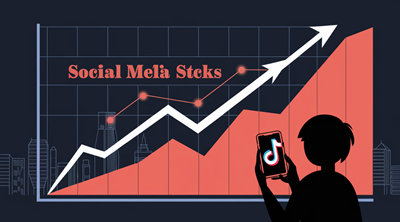MarketLens
XLF: Are Undervalued Financial Stocks Poised for a Rally?
The Financial Select Sector SPDR Fund (XLF) is poised for a significant breakout, driven by strong earnings expectations and favorable market conditions. Despite its recent performance lagging behind the broader S&P 500, the XLF ETF remains undervalued relative to historical benchmarks and offers a compelling investment opportunity as financial stocks gain momentum.
Overview of XLF ETF
The Financial Select Sector SPDR Fund (XLF) is a prominent exchange-traded fund that tracks the performance of financial stocks within the S&P 500. As of July 22, 2024, XLF is trading at $43.09, reflecting a year-to-date return of 16.01% and a one-year increase of 25.91%. The ETF has total net assets of approximately $42.72 billion and an expense ratio of 0.09%, making it an attractive option for investors seeking exposure to the financial sector.
Key Holdings and Sector Allocation
XLF’s portfolio is heavily weighted towards major financial institutions, with top holdings including Berkshire Hathaway (12.92%), JPMorgan Chase (10.19%), and Visa (7.25%). Approximately 96.76% of its assets are allocated to financial services, which encompass banks, insurance companies, and capital markets. This concentration in established financial firms positions XLF to benefit from the anticipated economic recovery and potential interest rate cuts.
Recent Performance and Technical Analysis
Performance Metrics
Despite a robust 32% increase from its October 2023 lows, XLF has underperformed the S&P 500 in 2024, with returns of +10.6% compared to the S&P 500’s +17%. This discrepancy highlights a potential opportunity for investors, as the financial sector may be undervalued relative to its growth potential.
Technical Indicators
Recent technical analysis indicates that XLF is approaching a critical breakout point. The daily chart shows the formation of a bullish inverse head and shoulders pattern, suggesting that a successful breakout could propel the ETF to new all-time highs. The weekly chart reinforces this bullish sentiment, with a target price of around $55 if the breakout occurs. The quarterly chart, however, reveals that XLF has struggled to regain its pre-2008 financial crisis peak, currently trading at approximately 41.50, which is only an 8.8% gain over 17 years compared to the S&P 500’s staggering 275% increase during the same period.
Earnings Expectations and Economic Indicators
Upcoming Earnings Reports
With 26 components of XLF set to report second-quarter earnings imminently, market analysts are closely monitoring these results. Strong earnings reports could catalyze the anticipated breakout and validate the bullish technical patterns observed. Recent trends indicate that bank stocks are gaining momentum, with Wells Fargo and JPMorgan Chase leading the charge. Analysts expect these banks to report solid earnings, driven by increased net interest income and effective cost management.
Economic Context
The broader economic environment is characterized by mixed signals. The U.S. economy grew by an estimated 2.5% in Q2 2024, but inflation remains a concern, with the core Personal Consumption Expenditures price index projected to rise to 2.9% by year-end. The Federal Reserve is expected to consider interest rate cuts in response to these economic indicators, which could further benefit financial stocks by reducing borrowing costs and stimulating lending activity.
Valuation and Investment Potential
Valuation Metrics
As of July 2024, XLF’s price-to-earnings (P/E) ratio stands at 19.55, which is relatively attractive compared to the forward P/E ratio of 21 for the S&P 500. Goldman Sachs notes that the banking sector trades at a forward P/E of 15, indicating that financial stocks are undervalued compared to their growth potential. This valuation discrepancy presents a compelling case for investors to consider XLF as a strategic addition to their portfolios.
Dividend Yield and Income Potential
XLF offers a dividend yield of 1.59%, providing investors with a steady income stream in addition to capital appreciation potential. The ETF’s annual dividend of $0.65 reflects the underlying strength of its holdings, particularly as banks like Wells Fargo plan to increase dividends amid strong earnings.
Market Trends and Future Outlook
Rotation into Financials
Recent market trends indicate a rotation out of technology stocks and into financials, driven by investor sentiment favoring sectors poised for recovery. This shift is supported by analysts’ predictions of a favorable economic environment for financial institutions, particularly as interest rates stabilize or decline.
Regulatory and Economic Challenges
While the financial sector faces challenges, including rising consumer delinquencies and regulatory scrutiny, the overall outlook remains positive. The Financial Stability Board has highlighted vulnerabilities in the financial system, but ongoing regulatory developments and a focus on consumer protection are likely to enhance stability in the long run.
Conclusion
In summary, the Financial Select Sector SPDR Fund (XLF) is well-positioned for a breakout as financial stocks gain momentum and remain undervalued relative to historical benchmarks. With strong earnings expectations, favorable economic indicators, and a supportive technical outlook, XLF presents a compelling investment opportunity for those looking to capitalize on the recovery of the financial sector. As the market anticipates upcoming earnings reports and potential interest rate cuts, investors should closely monitor XLF for signs of continued strength and growth.
Forward-Looking Statement
As we move further into 2024, the financial sector’s performance will be closely tied to economic developments, regulatory changes, and market sentiment. Investors should remain vigilant and consider the implications of these factors on their investment strategies, particularly in light of the potential for significant gains in undervalued financial stocks like those represented in the XLF ETF.
Related Articles
Category
You may also like
No related articles available
Breaking News
View All →No topics available at the moment






